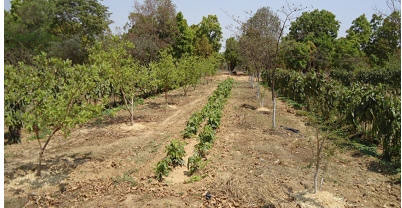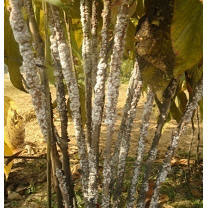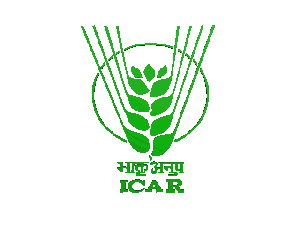| |
|
|
| |
About the Project >>
Strategy to arrest decline of lac insect biodiversity |
|
| |
|
|
| |
Keeping
in view the importance of lac cultivation, there is a strong need
for properly identifying, documenting and conserving the lac-insects
and associated fauna. The steps, which merit immediate attention,
are:
- Strong need to undertake
extensive surveys of our country and abroad to know the present
status of the lac insects and their plant-hosts bio-diversity.
The reported species of lac insect do not give any idea,
hitherto, of unreported species and more importantly the infra
specific genetic diversity of those species of economic value.
There is a great need for properly identifying, documenting and
conserving (in-situ and ex-situ) the diversity of lac insects
- Initiation of action needs to
be initiated to build a strong infrastructure to develop Field
Germplasm Bank to conserve at one suitable place, all the
recorded lac insects and host-plants. Protected lac insect and
hosts habitats on the pattern of sanctuaries and wild life parks
in different agro-climatic zones are needed to conserve the
precious wealth of our country.
- Integration of lac-culture
with agriculture and inclusion of multi-purpose lac-host plants
in social forestry programmes of, at least, those states where
lac cultivation is / was carried out as it will not only
diversify land use for increased productivity but also help save
lac-insect and associated flora and fauna.
|
|
| |

Lac Integrated Farming Model
(Horticultural) |

Lac bearing semialata |
|
| |
|
|
| |
- Paratachardina spp., though do
not produce lac of commercial importance, are potential natural
control agents for perennial weeds and need to be nurtured as
such by making them a component in integrated pest management
schedule as bio-control agents for managing weeds.
- Develop a database on all
aspects of lac production, processing, product development,
export, employment generation etc. for better policy planning.
Lac insects are influenced by the
environmental conditions. Therefore, partners have been carefully
selected from each of the eight agro-ecological regions. Ideal
situation would have been to have a network partner in each of the
21 agro-ecological regions, but keeping in view the man power and
financial constraints; initially it would suffice at the level of
eight agro-ecological regions of ICAR. |
|
| |
|
|
| |
|
|
| |
|
|
|
| |
QUICK LINKS |
|
|
| |
Contact Us |
Contact
Network Centres |
|
Role of
Network Centres |
Email
address |
|
Copyright @ 2014 Indian
Institute of Natural Resins & Gums (ICAR), Ranchi - 834 010, INDIA |
|



